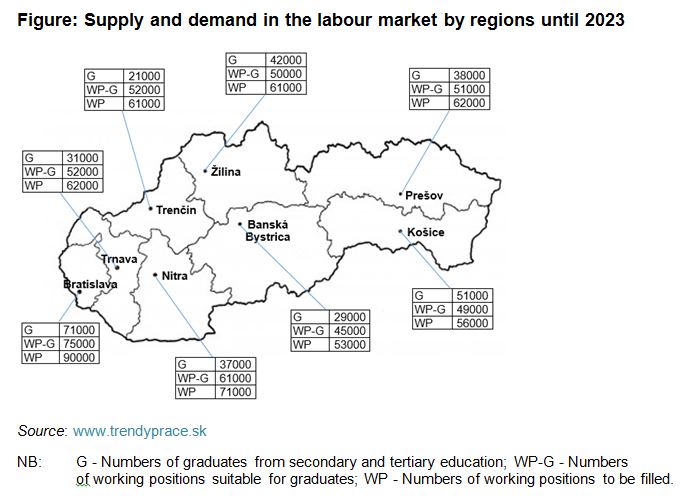The labour ministry offers data on trends in the labour market via the new portal.
The new portal offers data at national and regional levels and with regard to individual occupations. The portal also presents new working posts created due to the economic growth, and existing posts to become available due to retirement and other reasons. Based on a macroeconomic forecasting model, the additional labour force required for these future openings (on top of the existing workforce) can be calculated. The figure below indicates that Slovakia is in demand of labour force in all regions.

In all regions except Košice, working posts suitable for graduates of secondary and tertiary schools to be created by 2023 exceed the number of expected graduates. The most severe disparity between demand and supply is visible in the Trenčín region, where almost 2.5 posts per graduate will be available. In total, some 516 000 additional workers will be needed, ranging from 53 000 in the Banská Bystrica region to 90 000 in the Bratislava region.
The three top sectors lacking labour force are manufacturing (120 000 posts), followed by wholesale and retail trade, repair of motor vehicles and motorcycles (59 000) and education (39 000). In six out of eight regions manufacturing is on top. In the Bratislava region, most vacancies are expected in wholesale and retail trade, repair of motor vehicles and motorcycles (14 500), followed by administrative and support service activities (10 600). In the Košice region, education is in on top (6 400), followed by manufacturing (6 100).
Slovakia needs to rethink human resource management. About 300 000 Slovaks work abroad, while early leaving from education and training has become a serious issue; Eurostat data show that in 2010 only 4.7% of learners were early leavers (the lowest among EU countries), a share which rose to 9.3% in 2017 (18th place). What is more, Slovakia is among the countries vulnerable to industry 4.0 challenges. People working in industry will very likely face a need of retraining. The importance of education and retraining in particular will increase.
Read more



